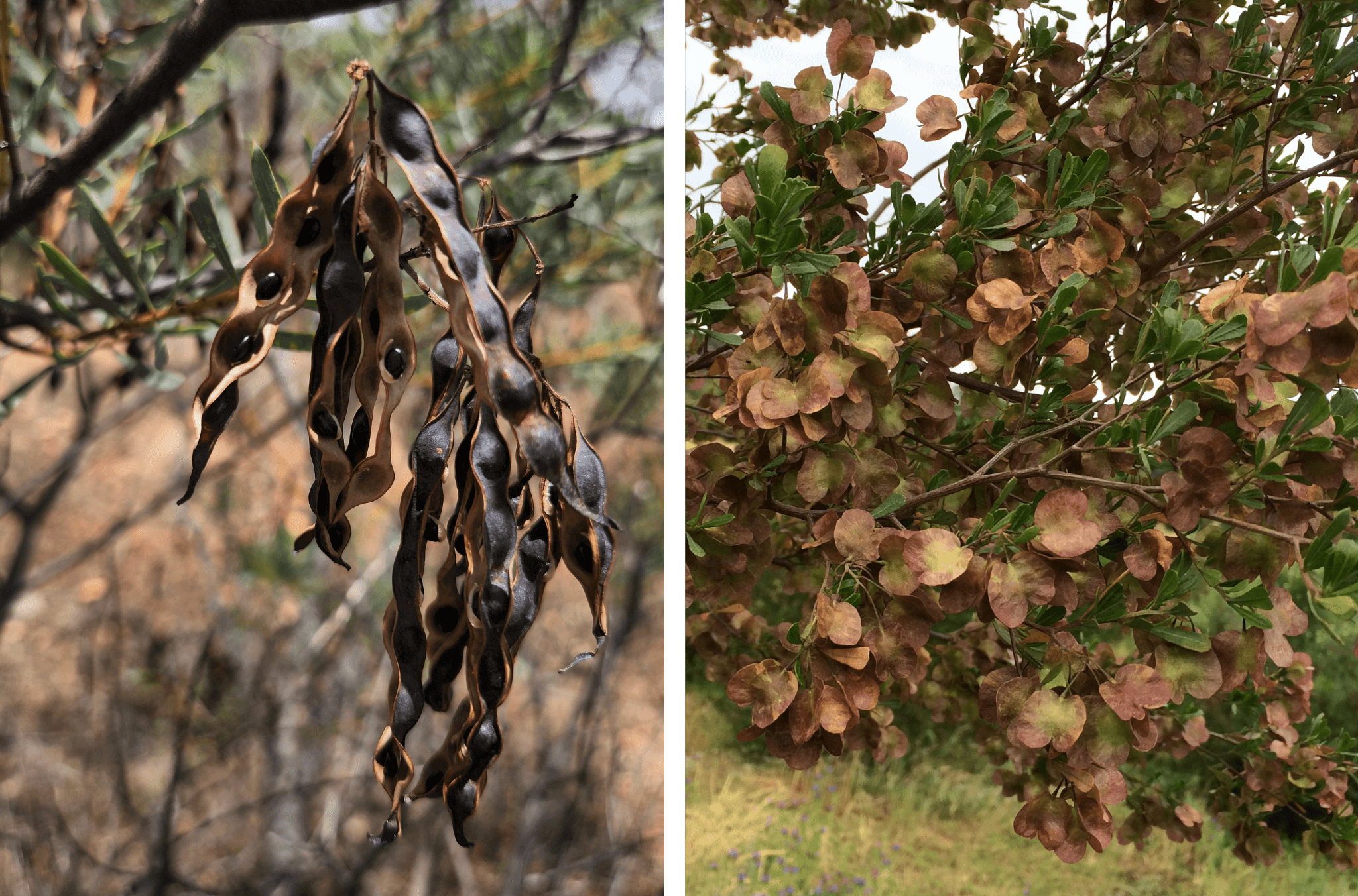Seed production areas for climate-resilient restoration
A new collaborative research project will help increase the availability of genetically diverse native seed for climate-resilient restoration.
Seed production areas can produce vast quantities of quality, genetically diverse seed to support climate-resilient restoration, if designed and managed correctly. Ongoing monitoring and evaluation are vital to ensure seed quality.
The genetic health and representativeness of a network of seed production areas established by Murray Local Land Services is being assessed by the Research Centre for Ecosystem Resilience (ReCER) at the Botanic Gardens of Sydney in a new project supported by the NSW Environmental Trust. Results will guide the development of protocols to assess, monitor and improve seed production areas.
Seed production areas increase seed quantity and quality
Seed production areas are sites where native plants are grown to produce seed for restoration. Also referred to as seed orchards, or living seed bank plantations, plants are selected and cultivated to produce large quantities of seed that is easy to harvest, process and distribute.
Native seed production areas are helping to meet the demand for genetically diverse native seed. 2/2 Seed production areas apply methods typical of agricultural or horticultural systems. Photo: Murray Native Seed Services, Murray Local Land Services
It is not feasible to source the quantity of seed required by the restoration sector from wild plant populations only. Seed collection from wild areas is time consuming, can deplete natural areas of food for native animals and seed for natural regeneration, and not all wild populations produce high quality seed. Habitat loss and fragmentation can decrease genetic diversity and seed sourced from small and isolated populations is likely to have reduced genetic diversity and fitness (due to inbreeding depression). For many plants that prefer to outcross (like eucalypts), seed may even be hybrid rather than pure.
If restored populations of plants are to persist in the long term, despite our changing climate and emerging pests and diseases (e.g. Myrtle rust), they need to have high genetic diversity. Genetic diversity increases adaptive capacity, or the ability to survive in a changing environment.
In seed production areas, carefully selected plants are brought together to maximise genetic diversity, reinstating geneflow disrupted by habitat fragmentation.
By cultivating carefully chosen plants, seed from seed production areas will be better able to cope with a changing climate.
Better monitoring and evaluation of seed production areas
Ongoing monitoring and evaluation are key to ensuring seed production areas deliver climate-resilient restoration outcomes.
Dr Marlien van der Merwe, from the Research Centre for Ecosystem Resilience at the Botanic Gardens of Sydney, is leading the new collaborative research project.
“Currently, there are no guidelines for monitoring and evaluating the quality and representativeness of seed produced in seed production areas,” said Dr van der Merwe.
“Given the relatively small number of parent trees used to produce abundant seed, any unintentional problems can be amplified. Get the mix of parent trees wrong, and the result may be low quality seed with poor viability, or at worse, restoration may threaten remnant vegetation through genetic swamping of inappropriate genetic material.”
Marlien van Der Merwe (Research Centre for Ecosystem Resilience) and Natasha Lappin (Murray Local Land Services) collecting leaf samples for genetic analysis from a seed production area established by Murray Native Seed Services.
Modern genomic techniques will be used to quantify genetic diversity within seed production areas established by Murray Local Land Services.
“A seed production area may be established with the correct mix of plants for optimal genetic diversity, but that doesn’t necessarily mean the resulting seed will be genetically diverse. Some parent plants may be lost, or others may not produce sufficient seed,” said Dr van der Merwe.
“We are measuring genetic diversity of the seed produced in seed production areas and will compare it to diversity in the species across the region and beyond. We will be able to recommend strategies for improving the mix of parent plants where needed and how best to use the seed.”

Acacia decora (L) and Dodonaea viscosa (R) fruit, two of species included in the new study investigating the genetic health and diversity of seed collected from seed production areas.
Results from the multi-species genomic assessment will guide the development of protocols for improving the design and evaluation of seed production areas so that high-quality genetically diverse seeds for native plant restoration can be produced.
To stay up to date on outcomes from this and other projects guiding resilient restoration, subscribe to Practitioner Updates from ReCER, an occasional e-Newsletter from the Research Centre for Ecosystem Resilience.